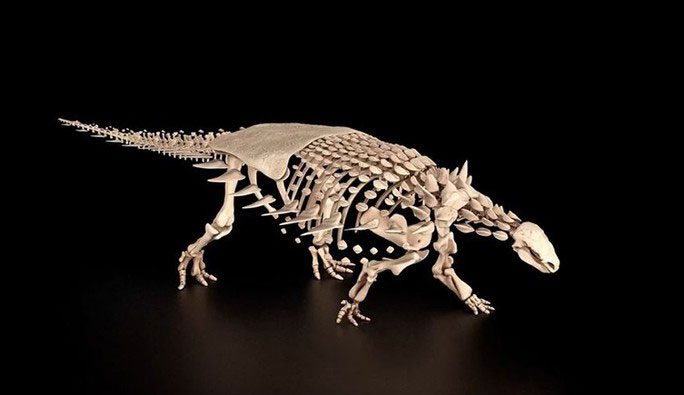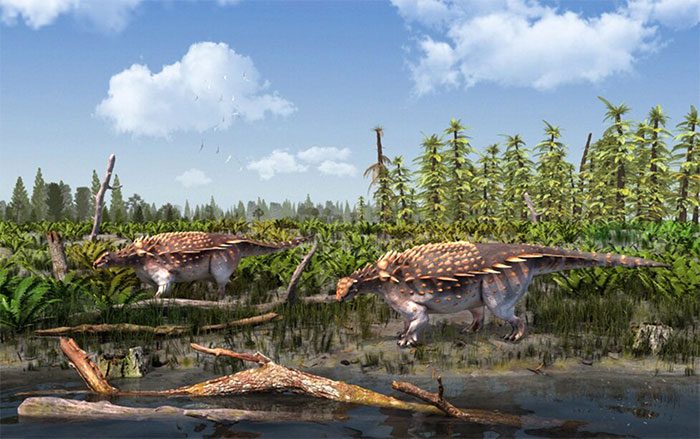A species belonging to a diverse group of dinosaurs from 130 million years ago on the Isle of Wight – the famous “island of monsters” in England – has just been discovered by a research team.
According to a study recently published in the scientific journal Systematic Palaeontology, the newly identified creature has been named Vectipelta barretti, and it belongs to a diverse group of dinosaurs known as Ankylosauria.
The Ankylosauria, which were four-legged reptiles, could reach heights taller than humans, with total lengths from head to tail sometimes extending up to 7 meters. They were abundant in North America, Asia, and Europe from the Jurassic to the Cretaceous periods.

Digital reconstruction of the Ankylosauria skeleton, showcasing skin spikes with bony cores, equipping them with hundreds of formidable weapons like swords – (Image: NATURAL HISTORY MUSEUM).
The research team, led by Dr. Stuart Pond from the Natural History Museum in London, England, reported that they discovered this creature from the Wessex Formation, an area rich in ancient sediments that significantly contributed to the Isle of Wight’s reputation as a “island of monsters.”
It is believed that the land now known as the Isle of Wight was once a low-lying area where water carried the remains of dinosaurs and many other prehistoric creatures, concentrating them in one place and turning the region into a rich fossil site.

The creature Vectipelta barretti – (Graphic: Stuart Pond/NATURAL HISTORY MUSEUM).
“This is an extremely important specimen because it sheds light on the diversity of Ankylosauria within the Wessex Formation, as well as at the beginning of the Cretaceous period in England,” Dr. Pond told Sci-News.
Ankylosauria have been found in England for centuries, but for 142 years, all specimens discovered – mostly just small parts of the body – were classified as the species Polacanthus foxii. However, this new discovery raises the possibility that Ankylosauria may be more diverse in this island nation, at least confirming the existence of an additional species.
The new creature, Vectipelta barretti, is estimated to be 6-8 million years older than the oldest specimens of Polacanthus foxii.
The authors employed genetic analysis techniques to compare the new fossil with Polacanthus foxii, revealing that the two species are not closely related.
Similar to other Ankylosauria, the new creature also features an “armored” body, with skin covered in spikes resembling sharp swords, creating a rather fearsome appearance despite being herbivorous dinosaurs.
The appearance of this previously unknown creature will also assist scientists in further understanding the hypothesis of a mass extinction during the Jurassic period, which simultaneously stimulated the evolution of surviving lineages, leading to the emergence of more new species.


















































